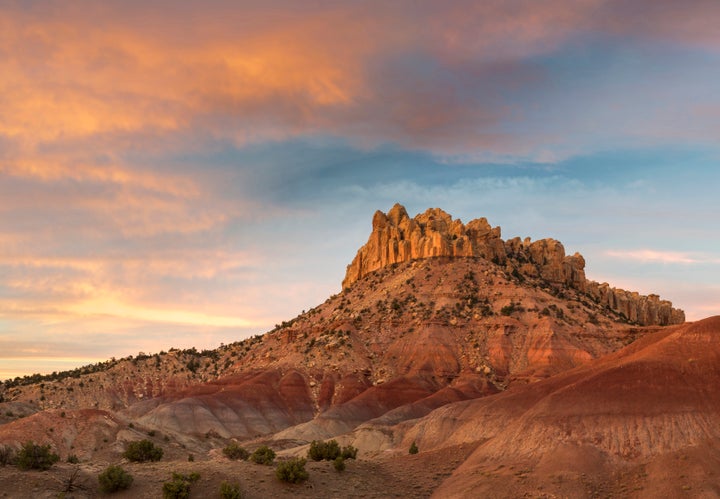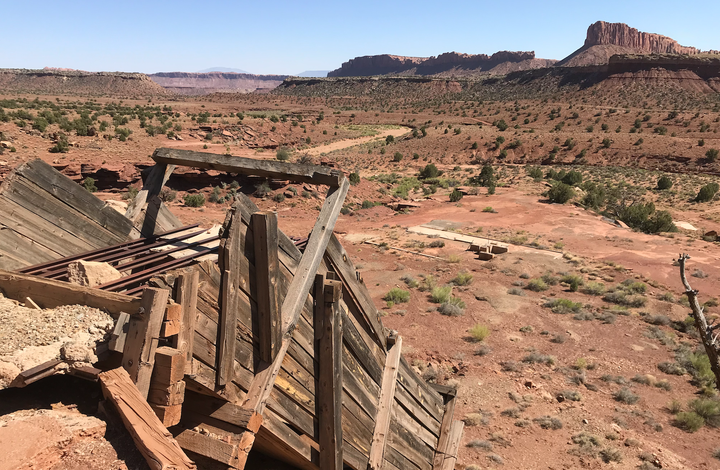
A Canadian mining company has ditched its plans to extract copper, cobalt and other minerals from approximately 200 acres of land that the Trump administration carved out of the boundary protecting Utah’s Grand Staircase-Escalante National Monument.
Glacier Lake Resources Inc., a Vancouver-based copper and silver mining firm, announced in June that it had entered into an agreement to acquire the Colt Mesa deposit, as HuffPost first reported. The former mine site was part of the federally-protected site and off-limits to mining and other development until late last year when President Donald Trump dismantled a pair of national monuments in southern Utah.
The company’s president and CEO, Saf Dhillon, told HuffPost in an email Thursday that Glacier Lake “dropped that project a while back.”
“We have nothing to do with anything at Colt Mesa,” he wrote. “We decided to not proceed forward.”
Dhillon did not respond to HuffPost’s question about when and why Glacier Lake decided to abandon the project. The company has also canceled its flagship Silver Vista mining project in British Columbia, Canada, he said.
“There are some changes happening, and there will be updates as they occur,” he wrote.
The company appears to be in serious financial trouble. Its March 2018 shareholders report says the firm “has accumulated a deficit of $4,779,688 and has not generated any revenue since inception, and expects to incur further losses in the development of its business,” as The Washington Post reported this month.
Details about all of Glacier Lake’s projects were scrubbed from the company’s website sometime between August and December, according to the Internet Archive, a digital archive of web pages. Colt Mesa was Glacier Lake‘s first planned project in the United States.

Located in the Circle Cliffs area, approximately 35 miles southeast of Boulder, Utah, the Colt Mesa deposit was discovered in 1968. Along with copper, it contains cobalt, zinc and nickel. A mine opened at the site in 1971 and operated on and off until 1974, when it was shut down due to a lack of water, according to a 1975 geological report by master’s student Gay Madsen Collings at the University of Utah, which was cited by the company.
The land where the mine is located was previously owned by the School and Institutional Trust Lands Administration, or SITLA, and transferred to the Bureau of Land Management in the late 1990s, after the monument’s designation.
Glacier Lake’s announcement last year troubled environmentalists who voiced concerns that a future mining operation would negatively impact tourism in the area. Dhillon told HuffPost at the time that the company was still in the “very early stage” of assessing the property and that “the target is a high value, underground scenario with modest disturbance.”
Records available on the Bureau of Land Management’s website show that Utah residents Dan and Nicholas Proctor staked 10 claims ― each just over 20 acres ― at the site on March 29. The Proctors filed additional maintenance waivers and notices in September and December. Glacier Lake had agreed to pay the vendors $120,000 over a two-year period, plus a million common shares of its stock, which at the time was valued at around $45,000. The shares are currently valued at around $15,000.
Former President Bill Clinton established the Grand Staircase-Escalante National Monument in 1996. In December, Trump cut the 1.87 million-acre site, the largest land national monument in the country, roughly in half. The administration also shrunk the nearby 1.35 million-acre Bears Ears National Monument by 85 percent. The moves opened the door for oil, gas and mineral extraction.
Former Interior Secretary Ryan Zinke, who resigned at the beginning of last month, maintained that the rollbacks were not about energy or mineral extraction, but reporting by The Washington Post, The New York Times and other outlets has shown otherwise.
On Thursday, Interior Department’s internal watchdog issued a report concluding there is “no evidence” that Zinke gave retired Utah state Rep. Mike Noel preferential treatment when he redrew the monument’s boundary. Noel, a Trump ally and vocal opponent of the Clinton-era monument, owns a 40-acre parcel that was removed from the monument’s boundary as part of Trump’s rollback.
